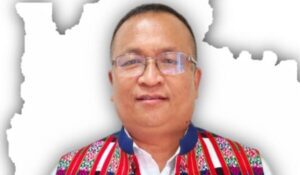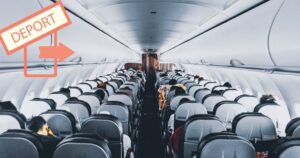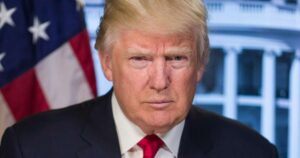Who wants wars? Probably no one. But we know people still fight, and thousands die every year in the war. Look at Ukraine, where Russia and Ukraine have been fighting for two years.
Who’s wrong here? Russia or Ukraine?
Many people unquestioningly support Ukraine, and many support Russia. But these supports don’t bring any solution. The solution will only come when both supporters know the reason why there’s war in Ukraine.
Let’s explore a more detailed story about Ukraine, a fascinating country with a rich history that became the center of a significant geopolitical drama around 2014. This story unfolds like a complex political chess game, where every move has global repercussions.
World War II ended, and the Cold War kicked off between the US-led Western bloc and the Soviet Union, which lasted for 45 years, making it the longest war in recorded history. It began in 1945 and ended up in 1989. In a turn of events, the Soviet Union was on the losing side of the Cold War, leading to its breakup in 1991.
Back in 1990, Ukraine made a bold move. After many years under the control of the Soviet Union, it declared independence. Imagine breaking away from a group you’ve been part of for a long time to stand on your own; that’s what Ukraine did. It decided to be neutral, not aligning closely with any major power blocs like the Russian sphere of influence or NATO, a military alliance led by the United States. Think of Ukraine as the new kid on the block, trying to make friends but also wanting to maintain its independence.
Of course, there were many political parties in newly born Ukraine, but two main ones stood out. One leaned towards Russia, favoring old ties and shared history. The other looked westward, towards Europe and the United States, dreaming of new alliances. Despite these divisions, Ukraine’s parliament strived to keep the country’s official stance neutral, not swinging too visibly to either side.
Needless to say, neutrality kept the country very peaceful. Many believe it’s the best period in Ukraine’s history.
However, things began to heat up in late 2013 and into 2014. Ukraine was at a crossroads, facing a tough choice: should it pursue closer ties with the European Union by signing an association agreement, or should it strengthen its relationship with Russia? This dilemma sparked massive protests in Kyiv and other cities, known as the Euromaidan movement. The protesters wanted Ukraine to lean towards Europe, but the president at the time had other ideas, preferring to keep the country within Russia’s orbit.
Do you know who the president of Ukraine was at that time?
Yes, it’s Viktor Yanukovych. The great president of Ukraine.
Of course, there was a reason behind the “Euromaidan movement.” The Barack Obama government supported the “Euromaidan movement” leaders.
Have you ever heard the name Victoria Nuland?
Probably, you’ve heard her name.
Victoria Nuland, the U.S. Assistant Secretary of State, who became a notable figure during this period. Nuland’s open support for the protestors and her discussions about Ukraine’s future leadership, revealed in a leaked phone call, highlighted the U.S.’s involvement in the situation.
As a result of the “Euromaidan movement,” the government changed, and a new government came to power. This is the government that the US supported.
The new Ukrainian president, Petro Poroshenko, was different from Viktor Yanukovych.
To many, this seemed like the U.S. was playing a direct role in Ukraine’s internal politics, a move that Russia viewed with suspicion and hostility.
The tension reached a boiling point.
Russia took quick action. On February 20, 2014, Russia invaded Crimea without firing a shot. The people of Crimea supported Russia.
It became even more serious when Russia annexed Crimea in March 2014, officially when the people of Crimea voted to be with Russia.
Crimea is strategically important to Russia, not just for its historical and cultural significance but also because it hosts Russia’s Black Sea Fleet in Sevastopol. The international community widely condemned Russia’s move, but it set off a domino effect. There was significant support for Russia in the eastern parts of Ukraine, specifically the Donbas and Luhansk regions. So, these areas became the epicenters of a violent conflict that pitted Ukrainian forces against pro-Russian separatists.
Ukrainian soldiers kept killing them by bombing from the sky. To save their lives, the people of the Donbas and Luhansk wanted to join with Russia.
But Putin refused their request. Putin understood this conflict wasn’t just about territory but also about identity, sovereignty, and Ukraine’s future direction. So, instead of including them in Russia, he helped these people achieve semi-autonomy.
Historically, the peace process is called the “Minsk Accords.”
The Minsk Accords, negotiated in 2014 and 2015, were attempts to bring peace to the region, outlining steps like a ceasefire and greater autonomy for the Donbas and Luhansk. Yet, these agreements have struggled to hold, with both sides accusing the other of violations.
So, the question is, “Who really violated the “Minsk Accords?”
No surprise, it’s Ukraine.
Do you know how?
Volodymyr Zelenskyy came to the power. He promised to bring peace to Ukraine. But instead, he wanted to join NATO and broke the “Minsk Accords.”
You know, breaking the “Minsk Accords” means attacking Donbas and Luhansk people. His government called them “separatists” and started bombing again.
Russia had to do something to save the people as a responsible country for the accords.
However, the roots sprouted even before Ukraine intended to join NATO in 2008.
An interesting point to highlight is that the Western alliance made a commitment to Russia at the end of the Cold War that NATO would not extend its territory eastwards, posing a threat to Russia’s security, and promised not to move “not one inch eastward.”
But did NATO stick to its word?
Since 1999, about 15 countries have joined NATO.
Moreover, during the NATO Bucharest Summit in April 2008, it was agreed that Ukraine and Georgia would one day join NATO. However, these two countries were not offered a Membership Action Plan (MAP) at that time.
Russia reached its limit, and Dmitry Medvedev invaded Georgia between August 7 and August 12, 2008.
Regrettably, NATO did not take lessons from its past actions. At the NATO Summit in Brussels in June 2021, NATO leaders again expressed their intention to include Ukraine in the Alliance with a Membership Action Plan (MAP).
In 2021, Ukraine’s President Zelensky was very vocal in his demand for NATO membership, even seeking a straightforward response from U.S. President Biden during a NATO summit in Brussels on June 14. He expressed frustration over Ukraine not being invited to the summit and urged NATO to accelerate Ukraine’s membership process.
This situation was exacerbated because NATO failed to keep the promises its previous leaders had made to Russia.
Putin saw no other option but to invade Ukraine.
On February 24, 2022, Russia took action again and invaded the Donbas and Luhansk areas to help the people. Within a few days, the Donbas and Luhansk people captured a lot of the area.
He was concerned that NATO might set up missile systems in Ukraine similar to those in Poland and Romania, right on Russia’s doorstep, which he viewed as a direct threat to Russia’s security.
The heavy battle went on since the invasion. Many were dying from both sides, but the Ukrainian side casualties were more.
As we know, Zenlensky was an actor. He’s not a politician but has a good heart for his people. As a Jew, he went to Israel for help and Israel to Turkey.
So, with the help of Israel and Turkey, a Peace Deal was made between Russia and Ukraine. Russia started withdrawing its troops.
But, unfortunately, things changed.
Biden sent former British Prime Minister Bori Johnson to Kyiv to avoid signing the deal. He promised not only to help win the war but also to recapture Crimea, which was already part of Russia.
Zelensky and his government officials believed the message and avoided signing the Peace Deal. War started in full force again. People from both sides started dying.
Of course, the US and NATO countries kept sending weapons.
But without soldiers, weapons are not useful as more than half a million young people left Ukraine at the beginning of the war. They didn’t want to fight. Besides, many support Danbas and Lunask’s autonomy and want to avoid fighting with those they support.
However, millions of Ukrainians are still fighting. According to the news, more than a million soldiers have died from the Ukrainian side so far.
Nowadays, Ukraine doesn’t even have enough men to go to the frontline. Some news sources claim that even underaged and over-aged men are compelled to go to war. Besides, women are being forced to go to war.
The news might have saddened you, but is there anything we can do if that’s the reality of the Ukraine war?
Honestly, I don’t know. Only I know the war should stop soon.
So, who’s responsible for the Ukraine crisis?
Of course, if we think deeply, the US and NATO cannot avoid the responsibility of the present Ukraine crisis.
However, most of the peace-loving citizens are against the war. These people are very honest and kind, and they are less corrupt than in other countries. Unfortunately, some of their government and officials are deadly corrupt—their corruption and greed are beyond human thinking.
The Russia-Urkaine War is one such example.
The more we know about the truth of the Russia-Ukraine war, the more we are terrified. We know it’s a proxy war that Ukrainians are fighting for. They will gain nothing except poverty, slavery, and death.
Then why are they fighting?
They are fighting because they are trapped. They are in a dilemma. They can neither avoid nor stop fighting.
According to news sources, it’s a Military Industry Complex (MIC) fight, and ordinary US and NATO citizens don’t like this war. They want to stop it as soon as possible. But their leaders are forcing them to support the war.
We all know what MIC wants. These are war machines, greedy machines, and money-loving machines. These complex machines need more wars for more money. If the world were peaceful, they couldn’t achieve their goals.
The saddest truth for the people of Ukraine is that they will lose everything. The most fertile land in Europe, which is called “Bread Buscket,” will not be theirs anymore. Besides, most of Ukraine’s assets will go to the MIC to pay billions of dollars in loans. Ukraine may stay poor from generation to generation because of the war, no matter if they win or lose.
Of course, there is no chance Ukraine will win. According to experts, as I mentioned above, Russia will never allow NATO to expand its border, even one inch of Ukraine.
Of course, many are claiming that Russia doesn’t want to conquer Ukraine but rather wants a Peace Deal so that Ukraine will never join NATO, which threatens Russia’s security.
So, what’s next?
Whose fault?
I’m not here to find whose fault but to find out the truth. The world is greedy. There is no justice for the weak, and that’s the rule of the world.
Throughout this period, the narratives have varied widely. Russia views its actions as protective, defending Russian-speaking populations and its strategic interests. On the other hand, Western and Ukrainian narratives often emphasize Russian aggression, the unlawful annexation of Crimea, and the present war.
Ukraine’s history illustrates the challenge of balancing national aspirations, international diplomacy, and strategic interests. The struggle to navigate between powerful neighbors and the international community while maintaining sovereignty and pursuing a vision for the future continues.
You can read “What is the Secret of the Russia-Ukraine War?” You’ll discover all the secrets you wouldn’t easily find on the internet.







